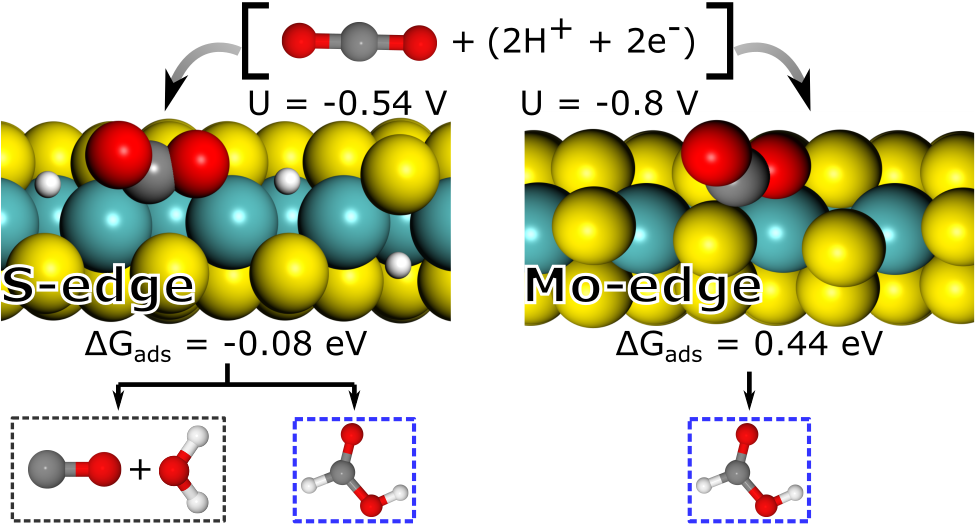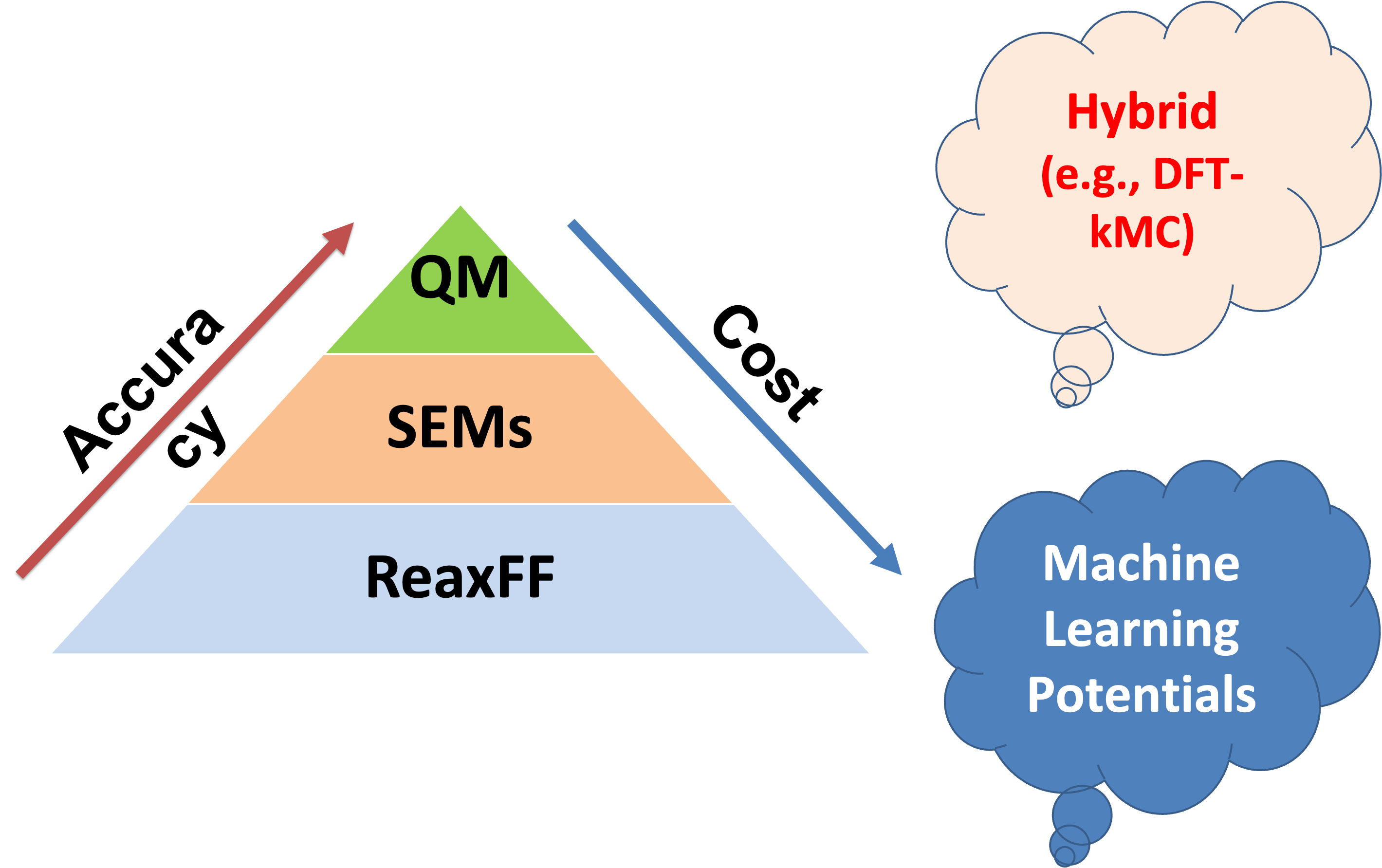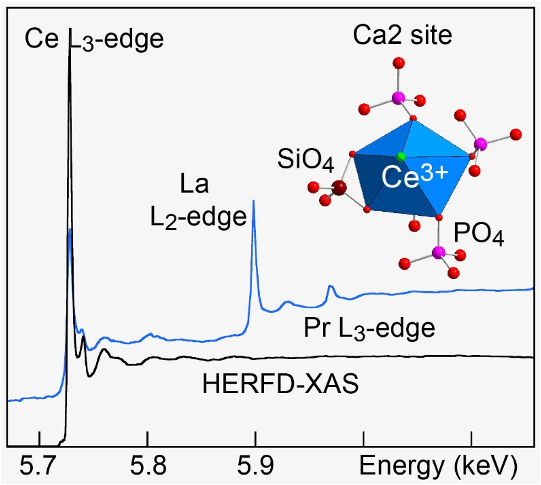The article, published in Journal of Applied Crystallography reports the development and use of a tool to facilitate the fitting of EXAFS data. We optimize atomic arrangements at the DFT level of theory and input the resulting local structure to simulate EXAFS via the FEFF software and reaching convincing fits of experimental spectra.
Category: Publications
CO2 reduction on MoS2
Akif has done amazing work in finalising a compelling manuscript on the use of MoS2 as a (photo)electro-cocatalysis for carbon dioxide reduction: The hydrogen coverage is intermediate to low under CO2 reduction potentials and the Mo- and S-edge have quite different reactivities, including for the CO2 adsorption. If you are interested in the reduction to CO and/or HCOOH, have a look at our J. Phys. Chem. C. paper

Hetero-structured Oxidation Catalyst
After a lot of work, the fruit of the collaboration between Do-Heyoung Kim from South Korea has finally been published in Small: We were interested in learning how a MnCo2O4.5 core, decorated by a Ni3S2 shell works as an electrocatalyst for water splitting or urea oxidation. It turns out that the working catalyst is composed of a few nanometers of surface Ni-oxides!
I am looking forward to further collaborations!
Modelling the Li-ion battery SEI
Mohammed Bin Jassar has worked hard during his PhD and a few months after his defence, I am happy to announce two publications of his: A perspective article in Advanced Functional Materials and a benchmarking Study in J. Phys. Chem. C. The latter discusses the use of semi-empirical methods for SEI related reactions and we have performed molecular dynamics simulations of the inorganic/organic interface of the SEI, demonstrating the high reactivity of Li2O.
Protonation, not hydrogenation during HER
We are very happy to announce the publication of our article on the hydrogen evolution reaction over MoS3-type catalysts in ACS Catalysis.
Our computational study suggests that the reaction involves a proton transfer, prior to a two-electron reduction. This type of elementary steps is quite uncommon in heterogeneous catalysis.
Cerium in Fluorapatite
Rare earth elements can be found incorporated in apatites. Here, we studied the prototypical incorporation of Ce in fluorapatite by high-energy-resolution fluorescence-detected extended X-ray absorption fine structure (HERFD-EXAFS) spectroscopy and DFT. Stay tuned: The corresponding project, coordinated by Alain Manceau, is just starting!

Polychromism in Minerals
As a first article of the PhD work of Raphaël Rullan (mainly directed by Tangui Le Bahers), I am happy that the article on the collars of alexandrite and cordierite is now publicly available in J. Comput. Chem.
Electron-Triggered Imine Coupling of a Ni(N2S2) complex
I am very happy to announce the publication of the collaborative work between uOttawa and ENS de Lyon on the redox behaviour of a Ni(N2S2) Complex in Chemistry – a European Journal. It is great to do some molecular chemistry once in a while!

Force-field for carboxylates on Co
Along the line of the GAL force field family and the simplified GLJ force field for oxide-organics interactions, we have developed the necessary force field for carboxylates (well, neutral carboxyls) on two low-energy Co-surfaces. You can read all about it in J. Chem. Phys. More to follow, when we will use this force field to study the diffusion of organic molecules through a surface film made up of carboxylated ligands.
Modelling the solid electrolyte interphase
Mohammed Bin Jassar, a CIFRE PhD student from Stellantis has done a great job in performing DFT computations and exploiting them subsequently in an on-lattice Kinetic Monte Carlo scheme. This beautiful collaboration with IFP Energies nouvelles is finally published in ACS Appl. Energy Mater..